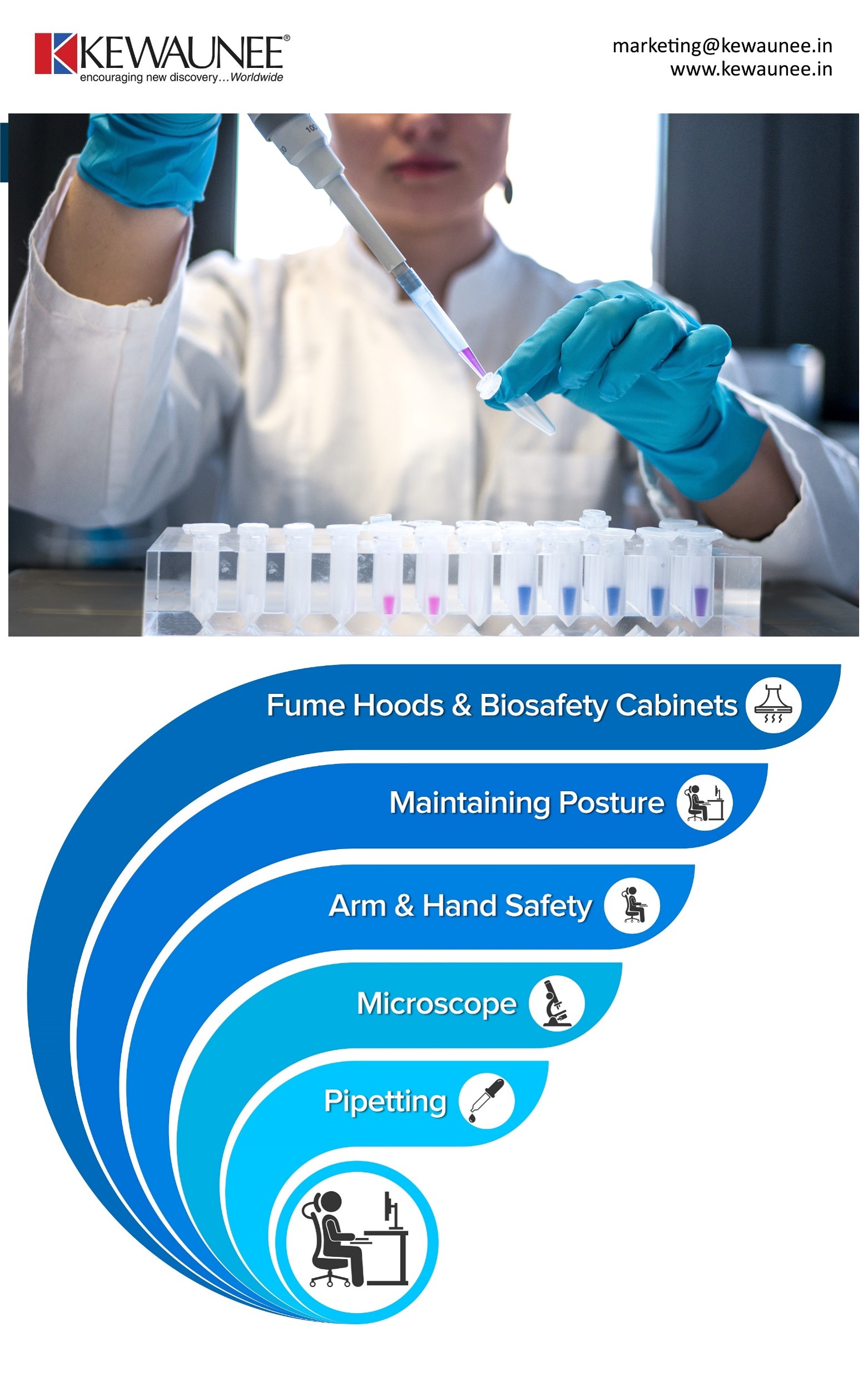Ergonomics In The Laboratory
The official definition of ergonomics from the International Ergonomics Association Executive Council is “Ergonomics (or human factors) is the scientific discipline concerned with the understanding of the interactions among human and other elements of a system, and the profession that applies theory, principles, data and methods to design in order to optimize human well-being and overall system performance.”
In simpler terms, ergonomics deals with designing and arranging things which people use. The design and arrangement are done so for efficiency and safely.
Ergonomics is an important aspect to consider in a laboratory setting. The researchers and users of a laboratory undergo highly repetitive movements (ex. pipetting) and/or prolonged static postures (ex. Use of microscope). In addition to prolonged poses and repetitive activities, users are also at the risk of frequently lifting and moving things across lab space, to overheads and other storage cabinets.
In this blog, let’s look at OSHA’s recommendation for ergonomic wellness in a laboratory.
| Activity | Good Practices |
| Maintaining posture |
|
| Arm & Hand Safety |
|
| Pipetting |
|
| Microscope |
|
| Fume Hoods & Biosafety Cabinets |
|
Safety & ergonomics. No two factors are more important in the laboratory environment. Kewaunee’s products are specifically built for the laboratories keeping these two principles in mind.
Comments are closed.











